Strengthening Liberia's Climate Information and Services to Enhance Climate Resilient Development and Adaptation
This project responds to priorities and actions identified in the Liberia's NAPA which articulate the need for securing, transferring and installing critical technologies, as well as developing the necessary systems for climate change-related information to permeate into decision-making processes. The technologies required to achieve these aims will increase the capacity of the national early warning network to forewarn and rapidly respond to extreme climate events.
This project is fully in line with LDCF/SCCF focal area objective 2 “Increase adaptive capacity to respond to the impacts of climate change, including variability, at local, national, regional and global level”. Related expected outcomes include strengthening national hydro-meteorological capacities to provide information which can be used to reduce the risk of climate-induced economic losses, as well as increasing the knowledge and understanding of current climate variability and change-induced risks at both the country level and for targeted vulnerable areas. The central goal is to revitalize the main economic sectors of the country, notably agriculture, fisheries and primary industries, in order to contribute to inclusive and sustainable economic development and growth, and to provide food security and nutrition, as well as employment.
For updates on UNDP Early Warning Systems and Climate Resilient Development projects in Africa, visit the UNDP-EWS Africa Blog.
Project details
Levels of intervention
- Community
Key implementers
- National Governments
Funding amounts
Project partners
- Government of Liberia
- United Nations Development Programme (UNDP)
- Ministry of Agriculture, Government of Liberia
- Global Environment Facility (GEF)
- Liberia Ministry of Lands, Mines, and Energy
Introduction
This project responds to priorities and actions identified in the Liberia's NAPA which articulate the need for securing, transferring and installing critical technologies, as well as developing the necessary systems for climate change-related information to permeate into decision-making processes. The technologies required to achieve these aims will increase the capacity of the national early warning network to forewarn and rapidly respond to extreme climate events.
This project is fully in line with LDCF/SCCF focal area objective 2 “Increase adaptive capacity to respond to the impacts of climate change, including variability, at local, national, regional and global level”. Related expected outcomes include strengthening national hydro-meteorological capacities to provide information which can be used to reduce the risk of climate-induced economic losses, as well as increasing the knowledge and understanding of current climate variability and change-induced risks at both the country level and for targeted vulnerable areas. The central goal is to revitalize the main economic sectors of the country, notably agriculture, fisheries and primary industries, in order to contribute to inclusive and sustainable economic development and growth, and to provide food security and nutrition, as well as employment.
For updates on UNDP Early Warning Systems and Climate Resilient Development projects in Africa, visit the UNDP-EWS Africa Blog.
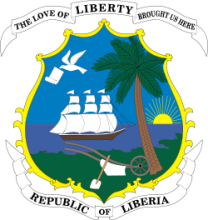
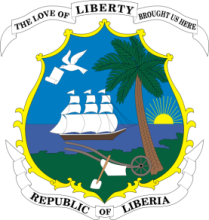
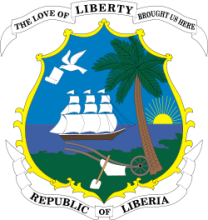
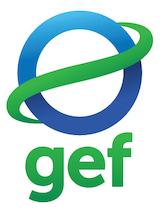
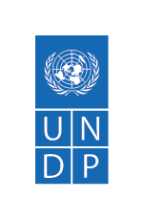
Project details
The project complies with the urgent needs identified in the NAPA, all of which are relevant for supporting the national development goals of achieving MDGs 1, 3, 6 and 7. The project is also aligned with the framework of the Poverty Reduction Strategy Paper (PRSP) I, which calls for sustaining the environment for the present generation and at the same time not compromising the ability of future generations to meet their own needs, and for which the central goal is to revitalize the main economic sectors of the country, notably agriculture, fisheries and primary industries, in order to contribute to inclusive and sustainable economic development and growth, and to provide food security and nutrition, as well as employment.
The overarching goal of the project is to safeguard hard won gains, resulting from ongoing and planned development efforts, from expected climate change impacts, and especially to reduce the vulnerability of local communities to increasing climate change induced risks. This goal is consistent with, and underpinned by, a number of important policies and strategies governing Liberia's national development and its specific responses to climate change.
Background
Fourteen years of civil war and decades of low investment in infrastructure have left the Liberian hydro-meteorological services with very little capacity to monitor, forecast, archive, analyse and communicate environmental information related to climate and water, including the impact of extreme climate events and disasters. This situation undermines efforts across a range of sectors to understand, quantify and plan for historical and current climate fluctuations, as well as develop tools to help plan adaptation to future climate changes. This is particularly important given that many of the key economic sectors in Liberia, namely agriculture, fisheries, forestry and energy are highly vulnerable to climate variability and change, yet little is known on how climate is already changing within the region, nor how it may be expected to change in the future.
Efforts to remedy this situation will therefore have positive consequences for the local economy. The proposed project aims to address these deficiencies by implementing the rollout of new infrastructure for monitoring current climate and extremes, as well as building capacity to use this information for communicating climate-related risks, and improve planning and decision-making in key economic sectors.
The Project
The following outlines briefly how climate affects the different sectors (NAPA,2008) and where the proposed project can usefully support climate sensitive short and long-term planning. In line with the NAPA, the proposed project will necessarily provide targeted support to the agriculture sectors. However, it is possible that the scopeed by the sparse observational network. Satellite observations of land use and wildfires have the potential to aid planning and emergency responses (when threatening communities) but are not incorporated into an effective early warning strategy. As forests take several years to mature long term (multi-year to multi- decadal) projections are also useful for long-term planning. However, the available fine resolution climate projections for Liberia are limited by both the observational network and local-regional capacity to generate such scenarios.
Coastal management and fisheries: Over 20,000 workers nationwide earn their livelihoods from fishing activities and fish represent the main source of animal protein in the typical Liberian diet.
- Lack of data on water temperatures, rainfall, river outflow and coastal ocean dynamics currently limits understanding the vulnerability of fisheries;
- Changing water temperatures and rainfall patterns may be adversely affecting fish stocks of some species;
Hot nights have increased by 15.7% between 1960 and 2003 and mean annual rainfall has on average decreased since 1960 (http://country-profiles.geog.ox.ac.uk/). It is noteworthy that many aspects of climate change, particularly changes in extremes, were not able to be calculated due to a lack of weather data for the country. Consequently these changes only provide an overview of changes for regions where data was available.
Accurate wind and wave forecasts for the coastal zones are either not available or not routinely communicated to users e.g.... fishing vessels. Whilst there are internationally available wind, wave and temperature forecasts for the globe, these do not account for subtleties of the Liberian coastline so efforts to produce locally applicable forecasts are warranted. The ongoing LDCF financed project “Enhancing Resilience of vulnerable coastal areas to climate change risks in Liberia” includes components to both set up an early warning system for the coast and develop future projections of sea level rise..
Public Health: Changes in rainfall and temperature patterns are expected to lead to increased infections of water-borne diseases e.g.... cholera, dysentery, giardiasis, amebiasis, typhoid fever, and malaria.
- Malaria is the number one cause of in-patient deaths (42%) and poses the most significant threat to public health, particularly among infants, pregnant mothers and their unborn children.
- Increases in temperature combined with poor hygienic practices, a scarcity of safe drinking water, limited public health facilities and flooding, will likely increase infection rates.
The predictability of disease outbreaks depend on several climate and non-climatic factors. Of those mentioned above cholera can be monitored/predicted by being related to zooplankton blooms seen in remotely sensed imagery, and malaria is predictable (through monitoring of rainfall and temperature) where it is seasonal in nature. The latter would have direct benefits for the National Malaria Control Programme (NMCP) and the UNDP GoAL WASH water and sanitation programme would clearly benefit from the former. The introduction of climate forecasts, satellite and climate observation capabilities, will therefore benefit these programmes and the state of public health in Liberia, by forewarning where and when environmental conditions are suitable for disease outbreaks.
Underlying causes
In Liberia the National Meteorological and Hydrological Service (NMHS) were severely disrupted for many years due to civil unrest that caused destruction of meteorological infrastructure, facilities and the loss of important meteorological data and information. As a result, the NMHS does not have the capability of providing the weather and climate information products and services necessary for science-based decision making such as:
- estimating hazard risks and vulnerabilities for e.g..... floodplain and agricultural land etc;
- development of an early warning system for droughts, floods and storms;decision making in weather and climate-sensitive economic activities such as agriculture, forestry and construction;
- coastal zone management, including fisheries;
- conducting feasibility studies for major developments (e.g.... highways, dams, bridges);
- analysing climate change risks and developing adaptation strategies.
This project is fully in line with LDCF/SCCF focal area objective 2 “Increase adaptive capacity to respond to the impacts of climate change, including variability, at local, national, regional and global level”. Related expected outcomes include strengthening national hydro-meteorological capacities to provide information which can be used to reduce the risk of climate-induced economic losses, as well as increasing the knowledge and understanding of current climate variability and change-induced risks at both the country level and for targeted vulnerable areas.
Source: Liberia's Project Identification Form (June 19, 2012)
- Community
- National Governments
- Government of Liberia
- United Nations Development Programme (UNDP)
- Ministry of Agriculture, Government of Liberia
- Global Environment Facility (GEF)
- Liberia Ministry of Lands, Mines, and Energy
Key results & output
Outcome 1: Increased capacity of hydro-meteorological services and associated networks to monitor and predict extreme weather, climate-related hazards and climate trends.
- Output 1.1: Installation of hydro-meteorological weather and flow gauge stations in critical areas across the country with communications and centralized archiving technologies at the Meteorology Division and Hydrological Service.
- Output 1.2: Technical capacity of staff in Meteorology Division developed to produce daily to seasonal, seasonal to annual, annual to multi-decadal, climate forecasts, using numerical weather prediction models, seasonal prediction models and internationally produced forecasts
- Output 1.3: Installation of satellite receivers and other infrastructure (e.g. radar, etc.) for monitoring and assessing the changing state of the environment and the impact of current and future climate on key environmental variables for planning food security, water, and land management.
- Output 1.4: Staff in Ministry of Land, Mines, and Energy (encompassing Meteorology and Hydrology) trained in the use of climate monitoring equipment, tailored forecasts of climate hazards and use of satellite monitoring for assessing crop production, water resources, wildfires, etc.
Outcome 2: Climate, environmental and socioeconomic data are tailored and combined to produce appropriate information which can be communicated to government entities and communities to enable informed decision making.
- Output 2.1: Systems and communication with National Disaster Relief Commission are enable to use the forecasts (Output 1.2), environmental monitoring data (Output 1.3), tailored forecasts (Output 1.4), and current vulnerability assessments, to forecast where climate induced risks are high.
- Output 2.2: Communication channels for issuing warnings (through both governmental and non-governmental agencies) are enabled (e.g. radio, mobile phones, television etc), as well as the procedures and legal basis for the issuing of warnings.
- Outcome 2.3: Three applications of the early warning system (e.g. coastal, agriculture, floods, health etc) are identified and outputs from 2.1 and 2.2 are tested for their effectiveness.
Outcome 3: Government, private sector and communities are aware of the major risks associated with climate change, and consider them when formulating development policies and strategies
- Output 3.1: Regional climate change scenarios are developed for Liberia and used to enable identification of ‘hotspots’ where climate change is expected to have high biophysical impacts.
- Output 3.2: Adaptation options for the most vulnerable communities and livelihoods are made aware to communities in light of projected climate change and current vulnerabilities.
- Output 3.3: A system for inter-ministerial dialogue on incorporating climate change considerations into government policies is established as well as a mechanism for discussing public and private financing of the EWS system.
- Output 3.4: Engagement of the private sector to develop paid-for services through the EWS and climate change adaptation options.
Reports & publications
Videos & multimedia
Monitoring & evaluation
Project Start:
Project Inception Workshop: will be held within the first 2 months of project start with those with assigned roles in the project organization structure, UNDP country office and where appropriate/feasible regional technical policy and programme advisors as well as other stakeholders. The Inception Workshop is crucial to building ownership for the project results and to plan the first year annual work plan.
Daily:
Day to day monitoring of implementation progress: will be the responsibility of the Project Manager, based on the project's Annual Work Plan and its indicators, with overall guidance from the Project Director. The Project Team will inform the UNDP-CO of any delays or difficulties faced during implementation so that the appropriate support or corrective measures can be adopted in a timely and remedial fashion.
Quarterly:
Project Progress Reports (PPR): quarterly reports will be assembled based on the information recorded and monitored in the UNDP Enhanced Results Based Management Platform. Risk analysis will be logged and regularly updated in ATLAS.
Annually:
Annual Project Review/Project Implementation Reports (APR/PIR): This key report is prepared to monitor progress made since project start and in particular for the previous reporting period (30 June to 1 July). The APR/PIR combines both UNDP and GEF reporting requirements.
Periodic Monitoring through Site Visits:
UNDP CO and the UNDP RCU will conduct visits to project sites based on the agreed schedule in the project's Inception Report/Annual Work Plan to assess first hand project progress. Other members of the Project Board may also join these visits. A Field Visit Report/BTOR will be prepared by the CO and UNDP RCU and will be circulated no less than one month after the visit to the project team and Project Board members.
Mid-Term of Project Cycle:
Mid-Term Evaluation: will determine progress being made toward the achievement of outcomes and will identify course correction if needed. It will focus on the effectiveness, efficiency and timeliness of project implementation; will highlight issues requiring decisions and actions; and will present initial lessons learned about project design, implementation and management. Findings of this review will be incorporated as recommendations for enhanced implementation during the final half of the project’s term.
End of Project:
Final Evaluation: will take place three months prior to the final Project Board meeting and will be undertaken in accordance with UNDP and GEF guidance. The final evaluation will focus on the delivery of the project’s results as initially planned (and as corrected after the mid-term evaluation, if any such correction took place). The final evaluation will look at impact and sustainability of results, including the contribution to capacity development and the achievement of global environmental benefits/goals. The Terminal Evaluation should also provide recommendations for follow-up activities.
Project Terminal Report: This comprehensive report will summarize the results achieved (objectives, outcomes, outputs), lessons learned, problems met and areas where results may not have been achieved. It will also lie out recommendations for any further steps that may need to be taken to ensure sustainability and replicability of the project’s results.
Learning and Knowledge Sharing:
Results from the project will be disseminated within and beyond the project intervention zone through existing information sharing networks and forums. The project will identify and participate, as relevant and appropriate, in scientific, policy-based and/or any other networks, which may be of benefit to project implementation though lessons learned. The project will identify, analyze, and share lessons learned that might be beneficial in the design and implementation of similar future projects.
Finally, there will be a two-way flow of information between this project and other projects of a similar focus.
Newsfeed
Contacts
- UNDPMark TadrossRegional Technical Advisor
- UNDPDominic SamCountry Officer

